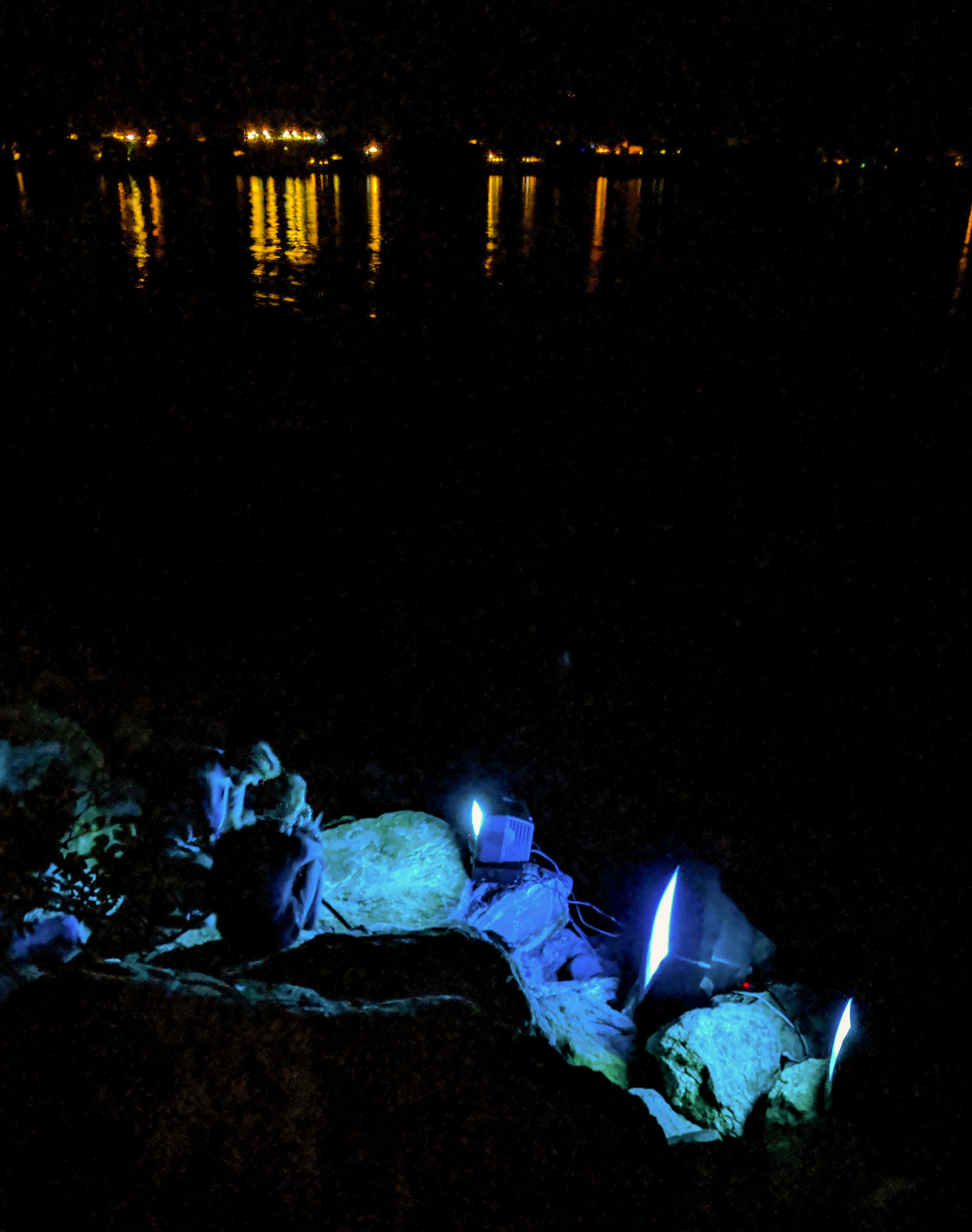What underlies the existential pull of the record button? The impulse to capture a given moment in time often arises, paradoxically, in situations that are too sublime for our recording media. We will record beauty relentlessly, even if, at the end of the day, “you just had to be there.”

The Resurrection Machine is a meditation on our obsession with capturing and manipulating moments of real, transient awe. The video installation uses a VHS camcorder to record and project the setting sun’s image onto a string of CRT televisions in real-time. The sunset’s recording is stopped, rewound, and replayed as the light of the sun moves from sky to screen.
In his book The Marvelous Clouds, media historian John Durham Peters elaborates on the inescapable link between recording media and an awareness of life’s impermanence. Peters writes that “the symbolic realm, with its devices of temporal storage and alteration,” offer us means “to suspend the one-way flow of time and its inevitable crash.” By symbolically embalming the moving present in reproducible form, “recording is a resurrection machine” (Peters, 310). Recording serves as an attempt to freeze a moment of meaning, dragging it back from eventual decay in our memory so that it can be revisited over and over again.
The Resurrection Machine relies on an analog media system in order to bring forth the materiality of the recorded sunset as stored data. Peters’ predecessor and fellow media scholar Friedrich Kittler defined technological media in relation to the data it produces, introducing the notion that “whenever something is stored, a temporal process must be materialized as a spatial structure” (Krämer, 99). In an age of “cloud” storage, the user is removed from the physical imprints of their digital recordings. The Resurrection Machine instead writes the camera’s image to VHS tape, tracing the descent of the sun along its winding film. The tape does more than simply recall the moment – it acts as a physical monument to memory.
To experience The Resurrection Machine is to interrogate its symbolic language, with all its absurdity and hopefulness laid bare. Recording is, in most ways, absurd. It’s a futile slog against the natural passage of time. By embracing its absurdity, though, this piece acknowledges the hopefulness of technology’s quest to buttress memory: the insistence that this time, in this place, a visual record will capture something essential, perfectly preserving the feeling of a moment that is, after all, only acknowledged because of its fleeting reality.
Text by Scott Diekema and Annie Kiyonaga
References
Peters, John Durham. The Marvelous Clouds: Toward a Philosophy of Elemental Media. Chicago: University of Chicago Press, 2016.
Krämer, Sybille. “The Cultural Techniques of Time Axis Manipulation: On Friedrich Kittler’s Conception of Media.”
Theory, Culture & Society 23, no. 7-8 (2006): 93–109.
Making of Recording 001









